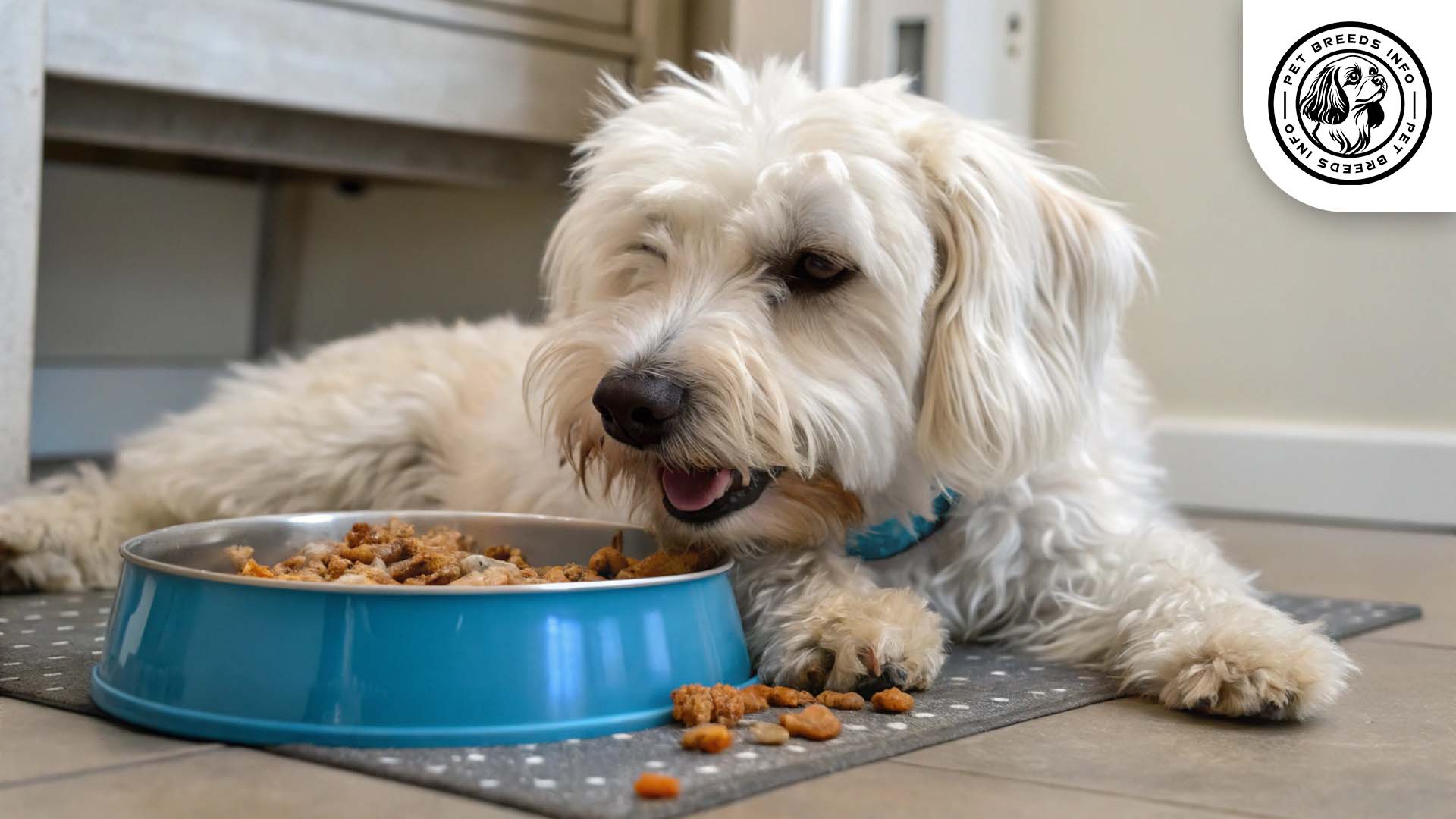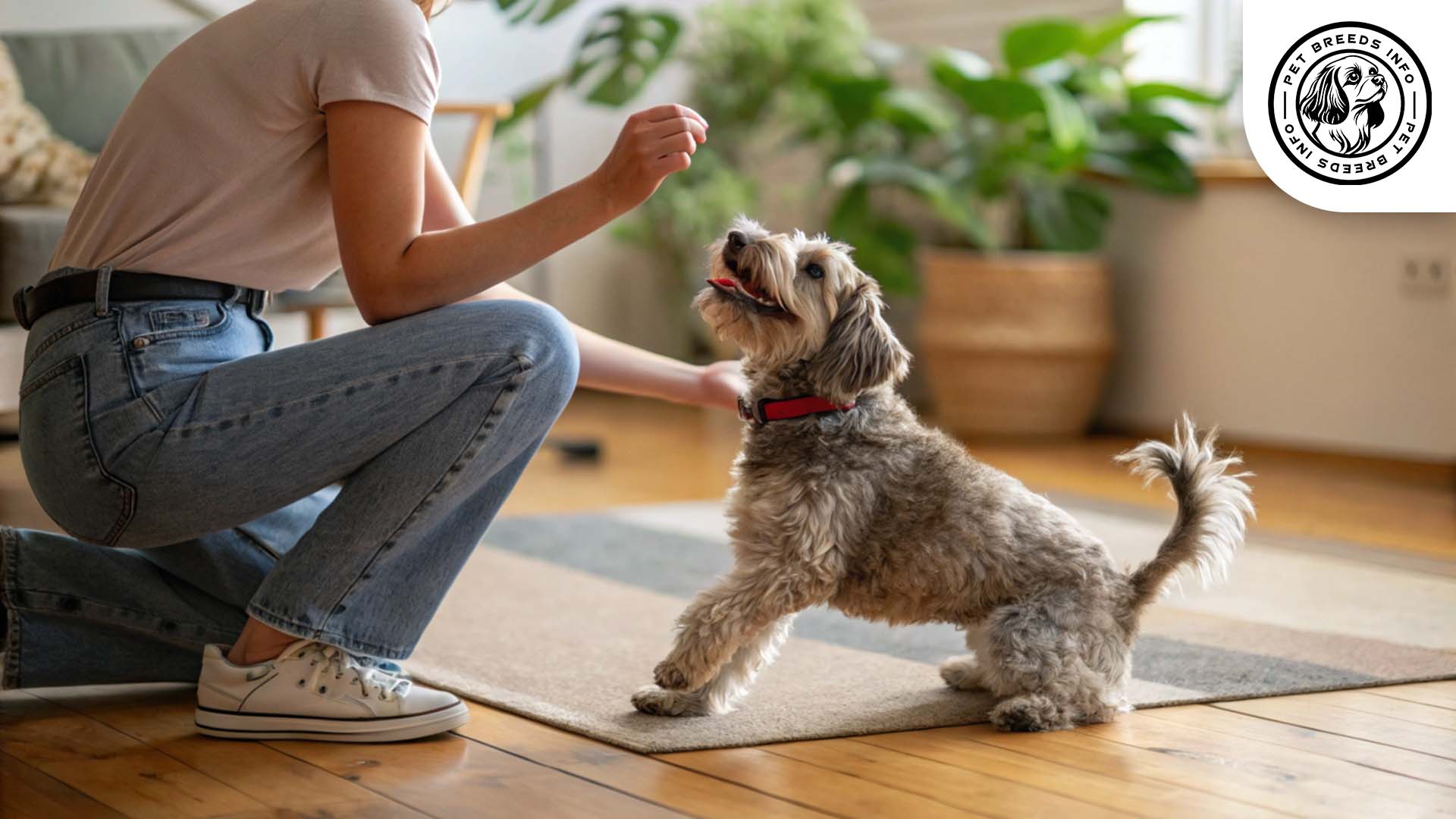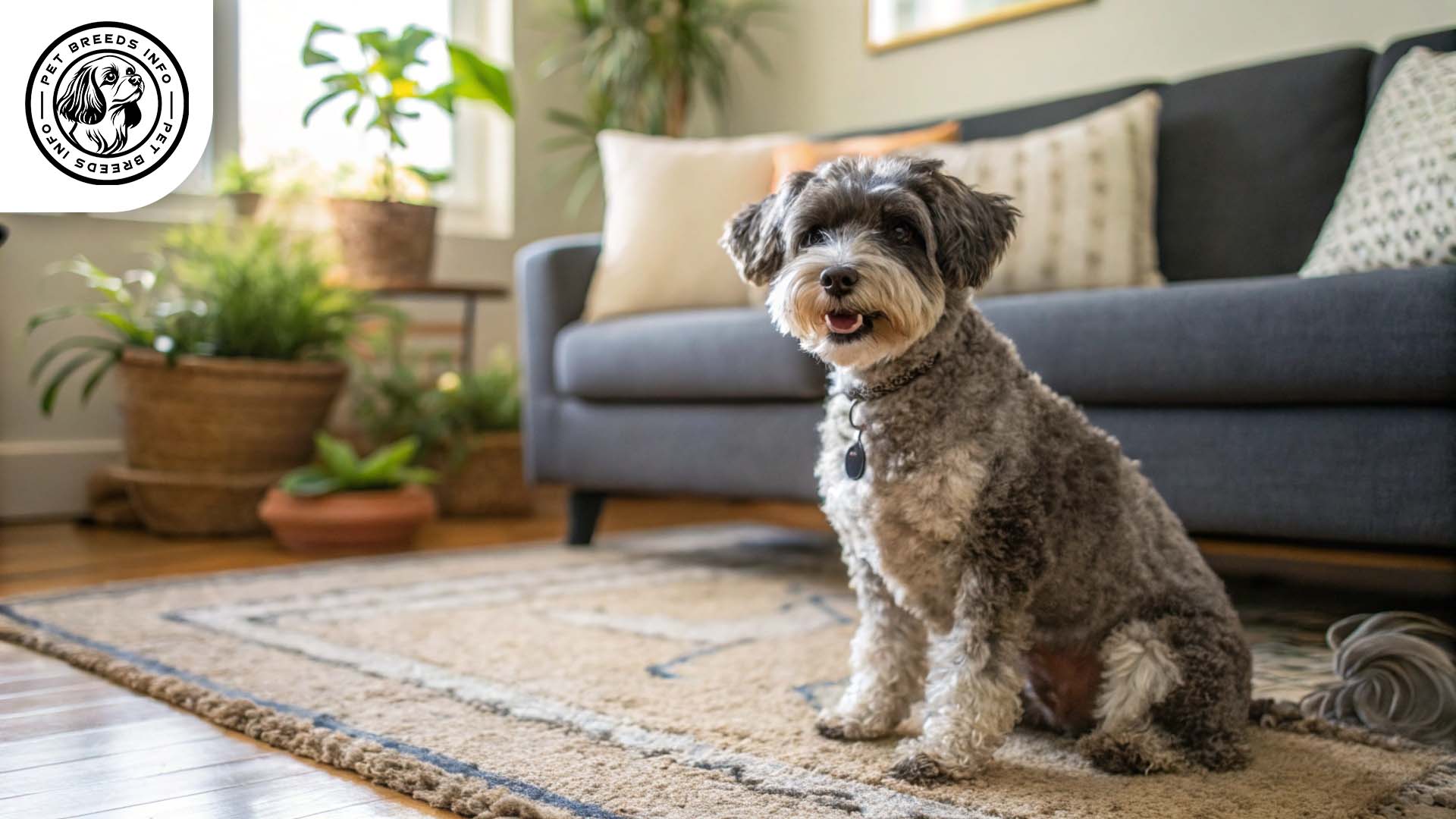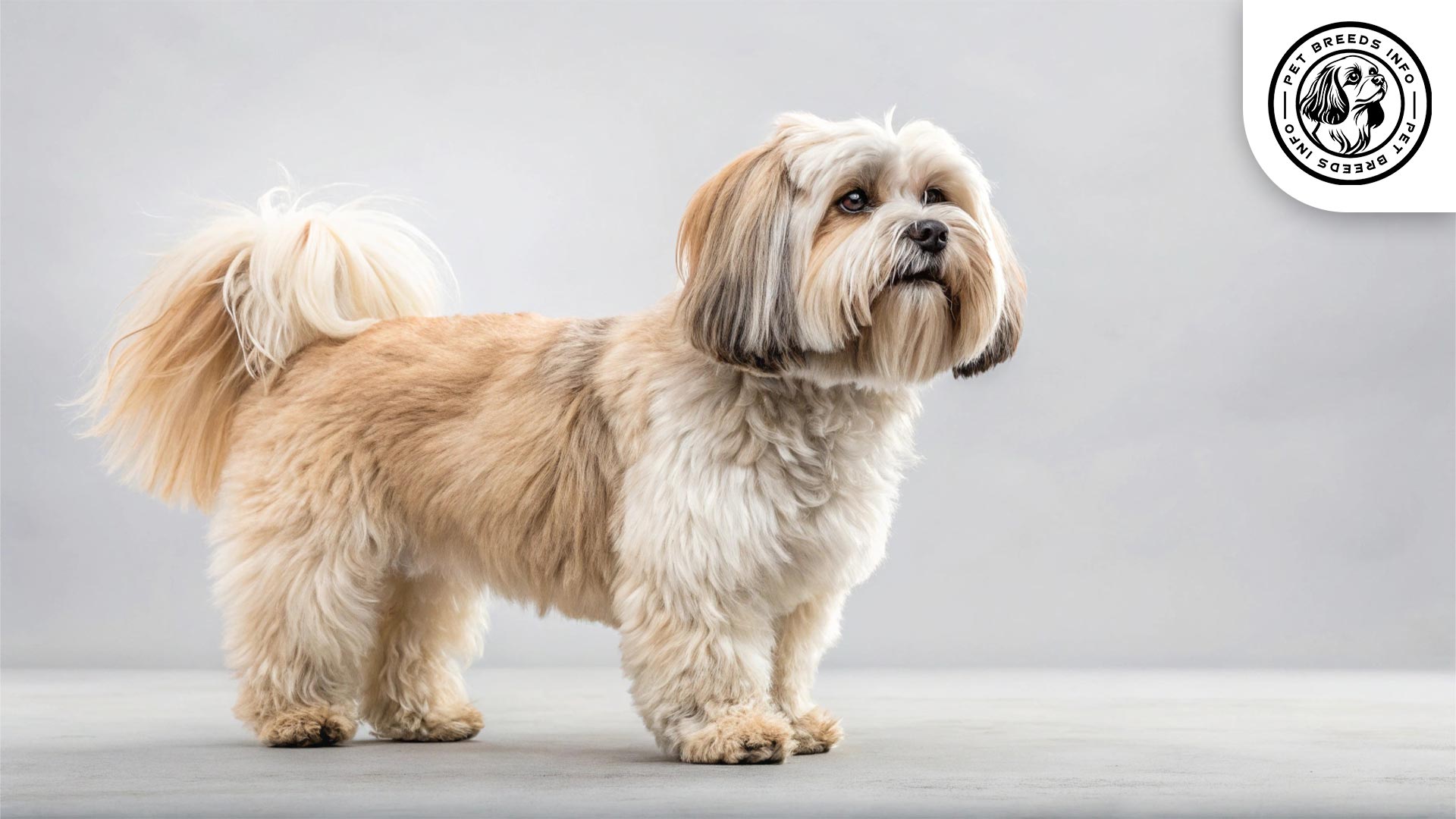Schnoodle Dog Breed: Size, Health, Price & Personality
General Introduction of the Breed
The Schnoodle is a hybrid dog breed resulting from a cross between a Schnauzer and a Poodle. This breed is known for its intelligence, affectionate nature, and hypoallergenic coat.
Alternative names: Schnauzer-Poodle Mix
Country of origin: United States
The Schnoodle was developed as a designer breed in the 1980s, combining the alertness of the Schnauzer with the intelligence and low-shedding coat of the Poodle. Due to variations in parent breeds, Schnoodles come in different sizes, making them a versatile companion for many owners.
Table of Contents
| Weight | 10-75 lbs (4.5-34 kg) |
| Lifespan | 12-16 years |
| Diet | High-quality dry, wet, or raw food |
| Care | Regular grooming, daily exercise, socialization |
| Health | Prone to hip dysplasia, PRA, epilepsy, allergies |
| Color | Black, white, gray, brown, apricot, sable |
| Nature | Intelligent, playful, affectionate, friendly |
| Price | $500 – $3,000 |
Physical Characteristics
Schnoodles come in various sizes, depending on whether they are bred from a Toy, Miniature, or Standard Poodle.
Height: 10-26 inches (25-66 cm)
Weight: 10-75 pounds (4.5-34 kg)
They have a soft, curly, or wavy coat that can be dense or fine. Common colors include black, white, gray, brown, apricot, sable, and multicolor variations.
Their eyes are round or oval-shaped, usually dark brown or hazel. They have medium-sized, floppy ears that hang down on the sides of their face.
Their tail is often natural and slightly curved but may be docked in some cases.

Personality and Temperament
The Schnoodle is an intelligent and highly trainable breed known for its problem-solving skills and eagerness to learn.
They have a cheerful and playful nature, making them energetic and requiring moderate to high levels of physical activity.
Schnoodles are affectionate and form strong bonds with their owners, often following them around the house.
They are generally friendly and social, making them great companions for families with children and owners who have other pets. Early socialization is recommended to curb excessive protective behavior.
This breed has a moderate level of sensitivity towards environmental changes, preferring stable and consistent routines.
Read More: Labradoodle Dog
Care and Maintenance Requirements
Schnoodles need daily exercise, including walks, playtime, and interactive activities to keep them mentally and physically stimulated.
They adapt well to apartment living but thrive in homes with access to outdoor space.
Their coat requires regular grooming, including brushing at least three times per week to prevent matting. Professional grooming every 6-8 weeks is recommended.
Since they are low shedders, they are suitable for allergy sufferers.
Schnoodles can be sensitive to extreme temperatures, particularly cold weather due to their fine coat. A sweater or coat may be necessary in winter.
Hygiene care includes regular bathing, nail trimming every few weeks, ear cleaning to prevent infections, and dental care to prevent plaque buildup.
Diet and Nutrition
Schnoodles thrive on high-quality dry kibble, wet food, or a raw diet, depending on their dietary needs.
They require a protein-rich diet with balanced fats and carbohydrates.
Avoid feeding chocolate, onions, garlic, grapes, and artificial additives, as these can be toxic to dogs.
Typically, small Schnoodles need 1-2 meals per day, while larger ones may require 2-3 balanced meals. Portion sizes depend on their weight, age, and activity level.

Health and Common Medical Issues
Schnoodles are generally healthy but may inherit genetic health conditions from their parent breeds.
Common issues include hip dysplasia, progressive retinal atrophy (PRA), epilepsy, and skin allergies.
They are also prone to ear infections, especially if not cleaned regularly.
The average life expectancy of a Schnoodle is 12-16 years.
Routine vet check-ups, vaccinations, and preventive care for parasites are essential for maintaining their health.
Read More: Goldendoodle Dog
Training and Behavior Management
Schnoodles are eager to please and easily trainable with positive reinforcement.
Early socialization is crucial to prevent excessive barking or shyness around strangers.
Training should begin early, with consistent commands and rewards.
Use treats and praise to encourage good behavior, and avoid harsh training methods, as they respond best to encouragement.
Interaction with Other Animals and Humans
Schnoodles are excellent companions for families and love being around people, including children.
They get along well with other pets, especially if socialized from an early age.
Whether in a family or with a single owner, they crave companionship and dislike being left alone for long periods.
They develop strong bonds with their owners and enjoy participating in family activities.

Price and Availability
The cost of purchasing a Schnoodle varies based on size, lineage, and breeder reputation.
Prices range from $500 to $3,000 depending on breeder quality and health clearances.
Potential owners should research reputable breeders or consider adopting from shelters or rescue organizations.
Ensuring health screenings and ethical breeding practices is essential when purchasing from breeders.
Read More: Cockapoo Dog
Conclusion and Final Thoughts
Schnoodles are affectionate, intelligent, and low-shedding, making them a great choice for families, singles, and seniors alike.
They do well in apartments or homes with yards as long as they receive proper exercise and mental stimulation.
Owners should be prepared for regular grooming, training, and daily interaction to keep this social breed happy.
If you’re looking for a loving, playful, and trainable companion, the Schnoodle may be the perfect addition to your home.
FAQ
What is a Schnoodle’s temperament like?
Schnoodles are affectionate, intelligent, and playful, making them great family pets.
Do Schnoodles require a lot of grooming?
Yes, their curly coat needs brushing several times a week and professional grooming every 6-8 weeks.
Are Schnoodles good for people with allergies?
Yes, they are low-shedding and often suitable for allergy sufferers.
How much exercise does a Schnoodle need?
They need daily walks and playtime to stay mentally and physically stimulated.
Are Schnoodles easy to train?
Yes, they are intelligent and eager to please, responding well to positive reinforcement.





